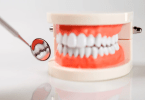
How to Support a Child With Allergies
Millions of children in the U.S. are affected every year by allergic reactions. They occur when the body’s immune system reacts to a “false alarm”. About 9.2 million children have skin allergies, while just under 6 million deal with food allergies. Kids can also be allergic to anything from latex and dander to pests and pollen.
If your child has an allergy, it’s important to know what you can do to help. Some kids have more severe reactions than others, but it’s never fun to see your little one struggling with symptoms – even when they’re mild.
So, what can you do to support your child with allergies and make sure they stay safe and healthy, even when their body is triggered by an allergen?
Understand the Symptoms
You can’t support your child with allergies until you get an accurate diagnosis. That starts by understanding some of the common symptoms of allergies in kids, including
- Stuffy nose
- Sneezing
- Itchy skin
- Hives
- Asthma symptoms
In extreme cases, your child may experience an allergic reaction that makes it difficult for them to breathe. It can also cause their blood pressure to drop rapidly, often causing them to faint. While that can be a scary thing to think about as a parent, it’s better to know the potential signs so you can have a plan of action.
If you’ve seen any of these symptoms in your child, it’s important to take them to a healthcare provider right away. Most allergies are diagnosed with a skin test, blood test, or challenge test in which small amounts of the allergens are given to your child to determine how severe their allergies are.
Know the Triggers
You may know your child has allergies based on their symptoms, but it’s just as crucial to know what they’re allergic to and how severely those allergens can trigger them. Some of the most common allergies kids deal with are
- Pet dander
- Trees and grass
- Latex
- Foods
- Medicines
- Bee stings
When you learn what your child is allergic to, you can put a strategy in place to keep them safe – not only at home but wherever they go.
One of the best ways to make sure your child is prepared to handle their allergies is to develop a strategy with them. Be very clear about what they’re allergic to, how they can avoid those things, and what they should do if they have a reaction. That’s not always easy, especially with younger kids who want to be able to do (and eat) everything their friends are doing. Reiterating the importance of their health and safety will make it easier for them to understand.
As a parent, you can’t keep your child in a bubble and you won’t be able to be with them every second. So, when they’re with friends or even at school, they must have tips to keep them safe. You can also connect with school administrators, teachers, and food service workers in the cafeteria depending on your child’s allergies.
Make sure they know the triggers and have access to any medications or an EpiPen for your child. If your child is old enough, it’s also a good idea for them to know how to take their own medication or administer an EpiPen, if needed. If not, you must educate their teacher or the school nurse on how to do it. When everyone is on the same page, it will be easier to prevent a reaction at school, and your kid will be prepared to take action if necessary.
Have a Strategy at Home
You might need to make some adjustments in your house or to your lifestyle if your child has allergies. Unfortunately, it’s easy for some of the most common allergens to circulate throughout the average home – especially if family members are coming and going all day. Thankfully, there are easy solutions you can put in place to create a low-risk home for allergies.
One of the best things you can do is to keep things as clean as possible. Allergens like mold, dust, and dander can wreak havoc on your child and cause their symptoms to flare up. Wiping down surfaces, vacuuming, mopping, and washing bedding should be a normal part of your weekly routine.
Another solution is to improve the air quality in your house. Consider installing a whole-house filtration system with a HEPA filter. They’re designed to remove at least 99.7% of particles from the air, so everyone in your home will breathe a bit easier.
If you can’t afford a filtration system for your whole home, make sure you’re regularly replacing HVAC filters. Larger HVAC systems have filters that can last up to a year. But, most systems require the filters to be changed every few months. If your child struggles with dust and dander, commit to changing the filters more frequently.
You can also use smaller air purifiers throughout your home – especially in your child’s room. Some of today’s compact air purifiers contain HEPA filters, so having one in as many rooms as possible will make a big difference in your home’s air quality.
A dehumidifier can also help by taking moisture out of the air. If your child is allergic to mold or dust mites, a dehumidifier can keep those triggers from thriving in your home.
Finally, be aware of pets. If your child is allergic to cats or dogs, the easiest solution is not to have one! But, if you already have a four-legged friend at home, try to limit its interaction with your little one, and wash your child’s clothes right away if the two do come in contact.
At home, it’s a bit easier to control allergy triggers, especially once you’ve fallen into a routine. Make sure your child is informed enough about their allergies to take the practices learned at home out into the “real world”. Allergies can sometimes change, and they might carry them into adulthood or they might not. Whatever the case, the protections you put in place for them now will continue to keep them safe and supported in the future.






